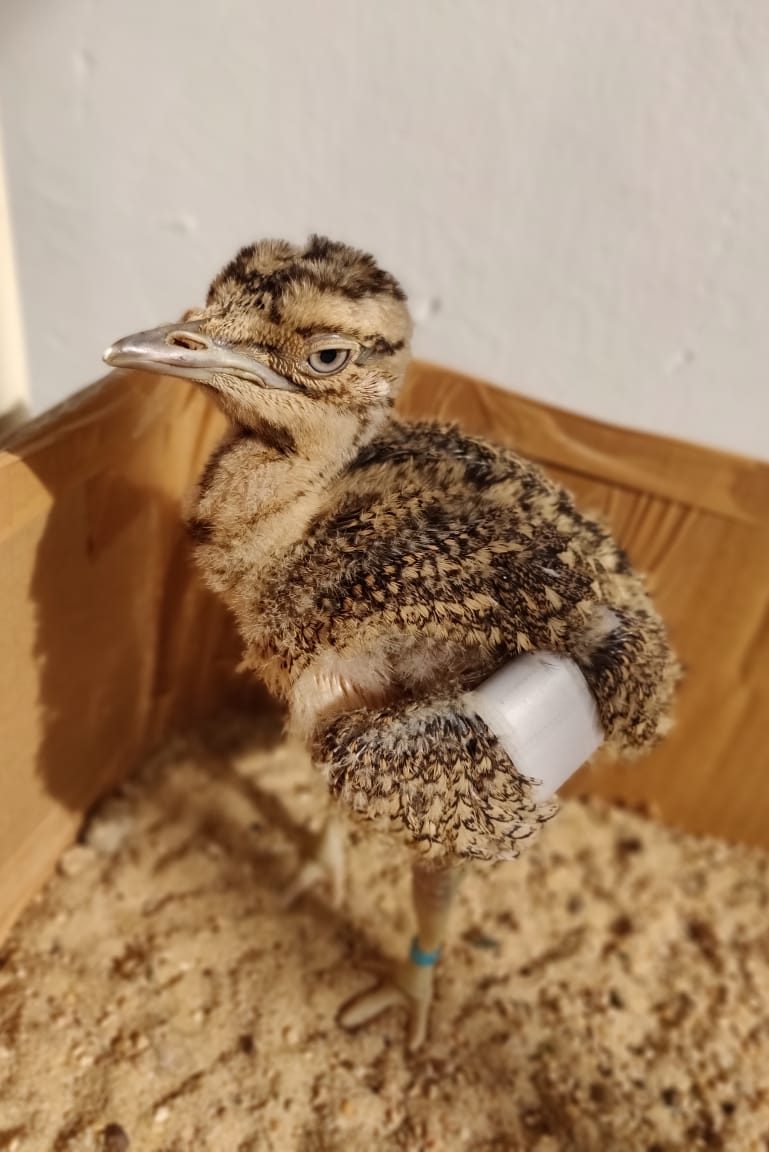Abu Dhabi and India Collaborate to Save the Great Indian Bustard and Lesser Florican From Extinction
Wildlife

April 21, 2020, 8:37 am
The International Fund for Houbara Conservation (IFHC), the global leader in pre-emptive species conservation, has joined forces with the Wildlife Institute of India to save the Great Indian Bustard and Lesser Florican from extinction in India.
In coordination with the Rajasthan Forest Department, the two entitles agreed to collaborate in conserving the Great Indian Bustard and the Lesser Florican, both of which are highly threatened. With just 160 birds estimated to remain in the wild in India, the Great Indian Bustard is listed as critically endangered and was chosen as the priority species for 2019 conservation efforts. With an estimated population size of about 1,500 in 2017, the Lesser Florican is classified as endangered.
Under the terms of the collaboration, IFHC offered its expertise in species conservation to be the knowledge and technical partner of the Wildlife Institute of India in this programme. In particular, the IFHC scientific team brought support and expertise in tracking wild populations of the Great Indian Bustard in their natural habitat, in behaviour movements and habitat use, nests searching, wild eggs collection, transport and incubation and captive-breeding design and techniques.
Furthermore, and as part of providing scientific expertise to the initiative, IFHC is also playing an active role within the steering committee managing the conservation programme.
In 2019, these collaborative efforts resulted in the hatchings of nine Great Indian Bustard eggs out of ten wild eggs collected, marking the beginning of a new era in the species’ conservation.
This early success and these hatchings have drawn high praise. Indian Prime Minister Narendra Modi referenced the work of the Wildlife Institute of India and IFHC during his video address to the 13th Conference of Parties (COP) of the Convention on the Conservation of Migratory Species of Wild Animals (CMS) in Ghandhinagar, India, in February.
IFHC’s collaboration also involved training Indian personnel. The training provided by IFHC was first-hand in its own houbara bustard facilities in UAE and then prolonged on site at the Great Indian Bustard breeding facility at Sam, in Rajasthan. This training entailed various aspects of the bustard’s breeding, from facility design to the incubation and rearing of chicks and was based on IFHC’s tremendous experience and achievements in the captive-breeding of the Houbara bustard. IFHC’s captive breeding programme has resulted in the breeding of more than 480,000 Houbara bustard with over 285,000 released to supplement wild populations over the past 20 years.
“The Great Indian bustard and the Lesser Florican are symbols of Indian heritage and the threat of extinction is real. As the leader in global species conservation, we could not stand by and watch this happen. We praise the Wildlife Institute of India and the State of Rajasthan in recognising the need for pre-emptive action to preserve and protect these important species,” said His Excellency Majid Al Mansouri, IFHC Managing Director.
“Our team on the ground in Rajasthan tracked wild populations to gain a better understanding of Great Indian Bustard behaviour in their natural environment, and IFHC will continue to advise on best practice moving forward.”
Efforts will continue in 2020 to build a captive stock for the Great Indian Bustard, which will enable the production of suitable individuals in the future for reintroduction operations. Meanwhile, conservation actions for the Lesser Florican will start in 2020.










